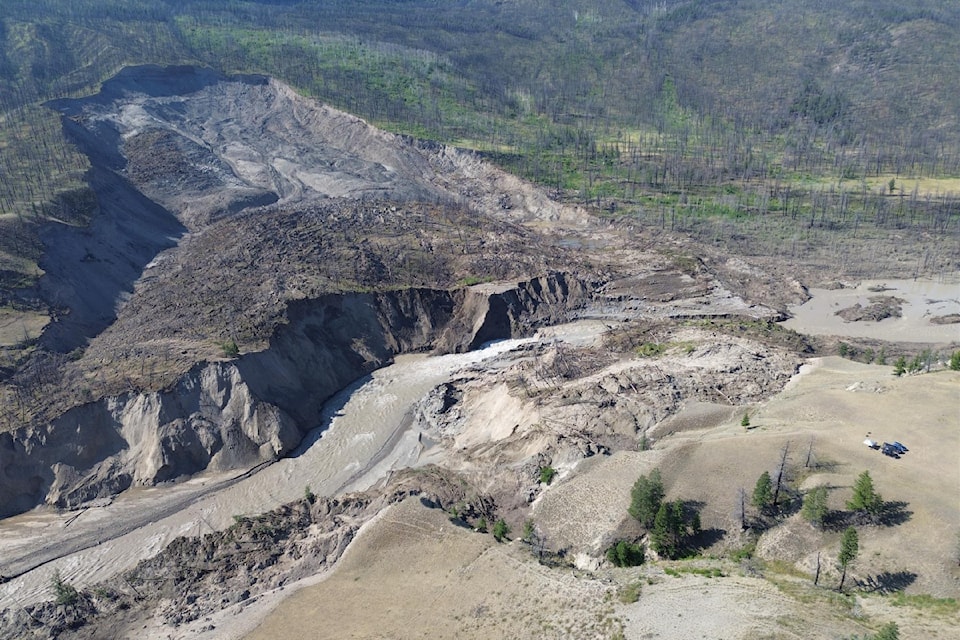Three days after the Chilcotin River breached a landslide southwest of Williams Lake and sent a sudden pulse of water and debris as far south as Hope, B.C. officials say river levels have largely returned to normal.
Flood warnings and high-stream flow advisories were lifted Wednesday and the province's executive director of water management said Thursday (Aug. 8) that all the slide's 60,000 cubic metres of debris had either been captured in a trap near Aggasiz or sent safely into the ocean.
At its peak, Connie Chapman said the surge raised the Fraser River by 3.5 metres at Big Bar, at about 1 a.m. Tuesday. Further downstream, it raised water levels 2.7 metres around Lillooet at 7:30 a.m. Tuesday, 1.1 metres in Hope at 7:30 p.m. Tuesday and 0.4 metres in Mission at 9 a.m. Wednesday. As of Thursday, levels are back to seasonal norms.
With the potential danger to the public waning, officials are now turning their full attention to two longer term concerns: slope stability and salmon.
Minister of Water, Land and Resource Stewardship Nathan Cullen said Thursday that they have already seen chunks of the Chilcotin River's embankments eroding both above and below the slide site. He explained that slopes upstream from the slide were weakened by the 11-kilometre long reservoir that formed above the dam and that slopes below it were lobbed off when the river was finally released on Monday.
The eroding slopes add to the sudden influx of sediment the landslide already deposited into the river system. Cullen estimated that the amount of earth contained in the landslide could have filled 2.5 million dump trucks.
One of the main issues with the increased erosion and sediment is that it is likely to impede the journey of spawning salmon, which make their way up the Fraser and Chilcotin rivers at this time of year. The new deposits may create barriers for the fish and even impact their ability to navigate using their sense of smell.
READ ALSO: Salmon a main concern after Chilcotin River landslide: Cullen
Cullen said they have a sonar system in place above the landslide to track how well fish are able to make it through the site. If they aren't doing well, Cullen said the province will collaborate with local First Nations on a different plan.
In 2019, a landslide partially blocked the Fraser River and created an impassable barrier to key salmon populations that spawn in the Upper Fraser watershed.
Rescue efforts to get the trapped salmon beyond that slide included shooting them through a so-called salmon cannon, capturing the salmon, then transporting them on a truck or helicopter past the site and finally creating a permanent fishway to help them get past the slide.
The Tsilhqot'in National Government issued a notice on Thursday asking members not to fish for chinook or sockeye salmon while they recover from the impacts of the landslide.
READ ALSO: Residents describe sound of roaring river, breaking trees of B.C.’s landslide waters
-With files from The Canadian Press



